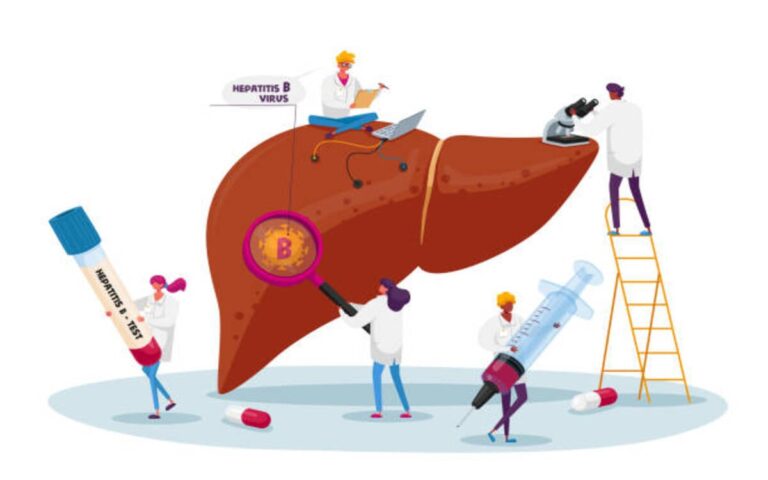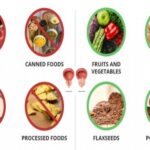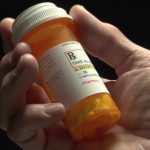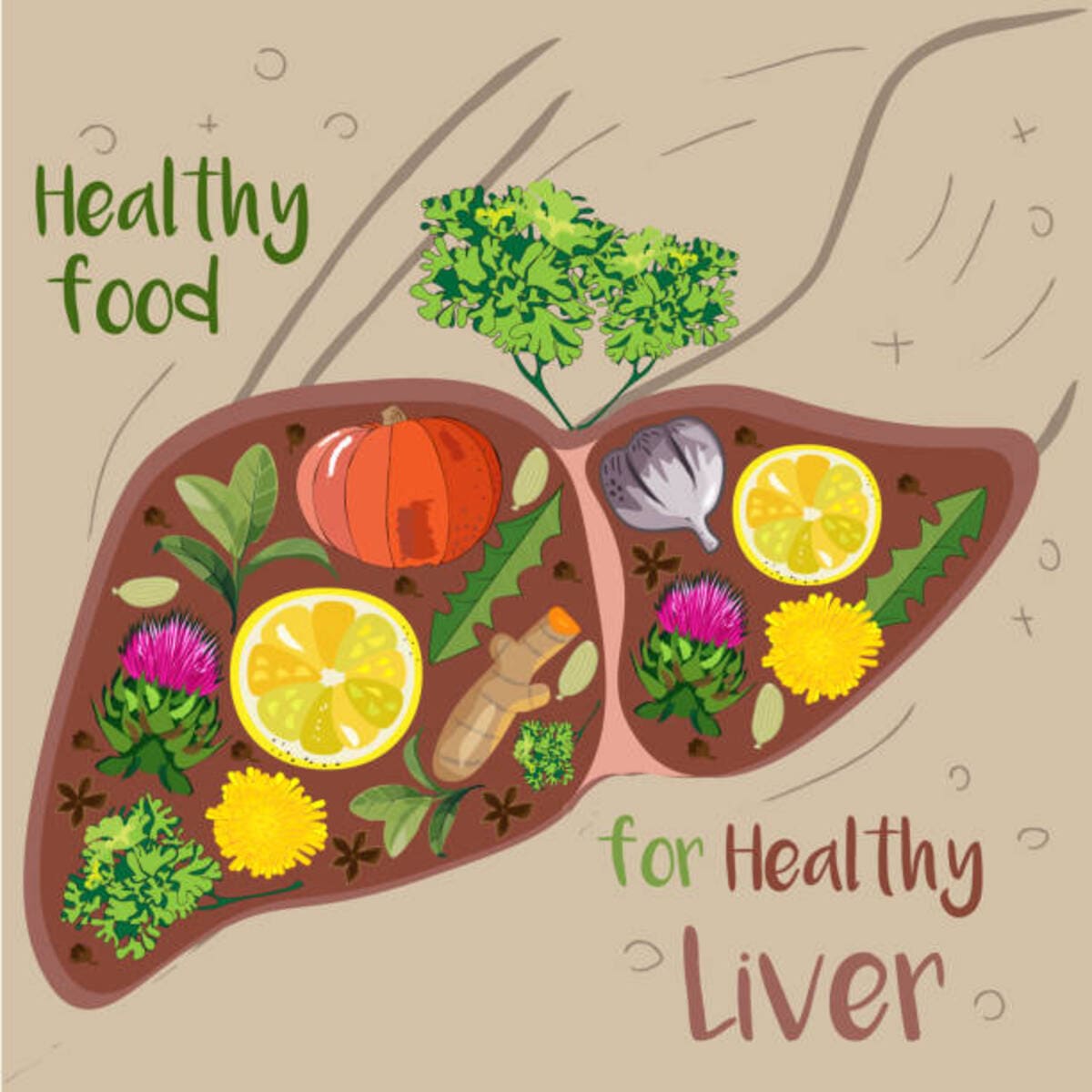
The liver is a vital organ that performs over 500 essential functions in the body, including processing nutrients, manufacturing proteins, and removing toxins from the blood.
Liver disease can disrupt these crucial processes and lead to potentially life-threatening complications. Having a deeper understanding of the various types of liver disease, common symptoms, and major causes and risk factors is key for prevention, early diagnosis, and prompt treatment.
Four Key Takeaways on Medication For liver Disease:
- Medications must be tailored to address the specific pathological mechanisms underlying different types of liver disease – whether viral, autoimmune, metabolic or genetic. Antivirals target hepatitis while insulin sensitizers and antioxidants help fatty liver.
- Lifestyle interventions including weight loss for NAFLD, alcohol avoidance and risk factor modification strongly complement pharmaceutical therapy for improved liver health.
- Closely monitoring lab markers of medication response allows optimizing treatment efficacy through evidence-based changes in therapeutic strategy aligned with patient trajectory.
- Emerging approaches like antifibrotics, stem cell transplantation and gene editing therapies offer tremendous promise for reversing liver damage from chronic inflammatory conditions.
A. Types of Liver Disease
There are over 100 identified liver diseases, which are broadly categorized as follows:
- Viral Hepatitis – Liver inflammation caused by hepatitis viruses like hepatitis A, B, C, D, and E. Of these, hepatitis B and C lead to chronic liver disease.
- Alcoholic Liver Disease – Liver damage from excessive alcohol use, encompassing fatty liver, alcoholic hepatitis, and cirrhosis.
- Non-Alcoholic Fatty Liver Disease (NAFLD) – Fat accumulation in liver cells, often caused by obesity, diabetes, or dyslipidemia. Can progress to non-alcoholic steatohepatitis (NASH) and cirrhosis.
- Autoimmune Diseases – Diseases involving immune system attacking liver cells like autoimmune hepatitis, primary biliary cholangitis (PBC) and primary sclerosing cholangitis (PSC).
- Genetic Diseases – Inherited disorders affecting liver function like hemochromatosis, Wilson’s disease, alpha-1 antitrypsin deficiency, and glycogen storage diseases.
- Cirrhosis – Late stage severe liver damage from many liver diseases causing extensive scar tissue replacing healthy liver tissue.
The different categories of liver disease call for different medication approaches tailored to their pathophysiology.
B. Identifying Symptoms of Liver Disease
Many liver diseases do not cause prominent signs in early stages, making diagnosis challenging. Some common symptoms pointing to possible liver problems include:
- Jaundice – yellow discoloration of skin and eyes
- Dark urine and pale stools
- Itchy skin
- Abdominal swelling and fluid accumulation
- Easy bruising and abnormal bleeding
- Fatigue and weakness
- Loss of appetite and unintentional weight loss
- Nausea and vomiting
However, many patients remain asymptomatic until extensive liver damage manifests through signs like ascites, variceal bleeding, hepatic encephalopathy, and liver cancer.
Blood tests assessing liver enzymes and function are essential to detect most liver conditions.
C. Exploring Causes and Risk Factors
Various factors that significantly increase susceptibility to liver disease include:
Viral Infections – Hepatitis B and C viruses spreading via infected blood, unprotected sex, needle sharing, etc. Hepatitis A and E spread through contaminated food and water.
Excessive Alcohol Intake – Regular heavy drinking over many years inducing fatty liver changes.
Non-alcoholic Fatty Liver Disease – Metabolic syndrome markers like obesity, high blood sugar, hypertension, and abnormal cholesterol.
Autoimmune Disorders – Unknown triggers causing body’s immune defenses to mistakenly target liver cells and bile ducts.
Genetic Conditions – Inherited mutations impairing liver function or increasing accumulation of substances like iron, copper, or glycogen.
Toxins and Chemicals – Environmental exposures to industrial chemicals, aflatoxins, pesticides, heavy metals etc.
Many of these causal factors interact synergistically to amplify liver injury. Hence, managing these appropriately through medications or lifestyle changes is vital.
5 Best Medication for Liver Disease: Unveiling New Hope Against Liver Disease!
Here are 5 of the best medications for liver disease and how they offer new hope:
- Antiviral Medications: Powerful antiviral medications like sofosbuvir and velpatasvir are curing hepatitis C, which is the most common cause of liver failure and transplant. Over 95% of hepatitis C patients can now be cured with 8-12 weeks of treatment.
- Antifibrotics: Promising new antifibrotic drugs like selonsertib help stop progression of scarring in conditions like NASH by blocking pathways that stimulate collagen production in the liver. Though still experimental, antifibrotics could prevent many cases of cirrhosis.
- Stem Cell Therapies: Stem cell therapy shows potential to regenerate healthy liver tissue and improve liver function. In early trials, over 70% of patients with liver failure stabilized or improved. Stem cells may soon change outlooks for advanced liver disease.
- Tipepidine: Originally developed as a cough suppressant, tipepidine has powerful anti-inflammatory effects in the liver and shows promise against diseases ranging from NAFLD to viral hepatitis. Researchers are now rigorously testing its efficacy and safety.
- CUR-915: CUR-915 is an engineered hybrid molecule that disrupts cell signaling pathways involved in liver inflammation and fibrosis. Early human trials found it well tolerated with signs it can dampen disease progression. Large phase 2b trials are now planned for NASH treatment.
The bottom line is that beyond traditional drugs that simply manage symptoms, truly revolutionary medications that can cure viral hepatitis, halt progression of fibrosis, spur liver regeneration, and dampen liver inflammation are starting to emerge. Exciting times lay ahead in treating liver conditions!
II. Medications Tailored for Various Liver Diseases
Given the diverse mechanisms driving different forms of liver disease, it is crucial to choose medications that specifically target the predominant pathological pathways involved.
A. Addressing Viral Hepatitis
For hepatitis B and hepatitis C, antiviral medications that suppress viral replication form the cornerstone of therapy.
1. Antiviral Medications: Mechanisms and Effectiveness
Hepatitis B antivirals like tenofovir or entecavir mimic naturally occurring DNA building blocks, getting incorporated into the virus and causing early chain termination thereby suppressing virus proliferation.
Newer hepatitis C direct acting antivirals (DAAs) including sofosbuvir, voxilaprevir, glecaprevir etc. target specific non-structural proteins the virus requires for replication and assembly.
Using DAA regimens cure hepatitis C in over 95% patients through sustained virologic response. However, their high cost remains a barrier to mass adoption.
2. Immunosuppressants: Role in Hepatitis Treatment
In autoimmune hepatitis, immunosuppressants like prednisone, azathioprine reduce overactive immune attack on liver cells. They act by impeding proliferation of lymphocytes and pro-inflammatory signals.
Corticosteroids form first line treatment, while azathioprines allow lower steroid doses to minimize side effects.
3. Importance of Vaccinations in Preventing Hepatitis
Effective vaccination exists for hepatitis A and B viruses. Preventive vaccination is vital to reduce disease burden globally through herd immunity.
Hepatitis A vaccination confers enduring immunity using inactivated virus or recombinant subunit platforms. Hepatitis B vaccination comprises recombinant surface antigen formulated with adjuvants, needing booster doses for sustained protection.
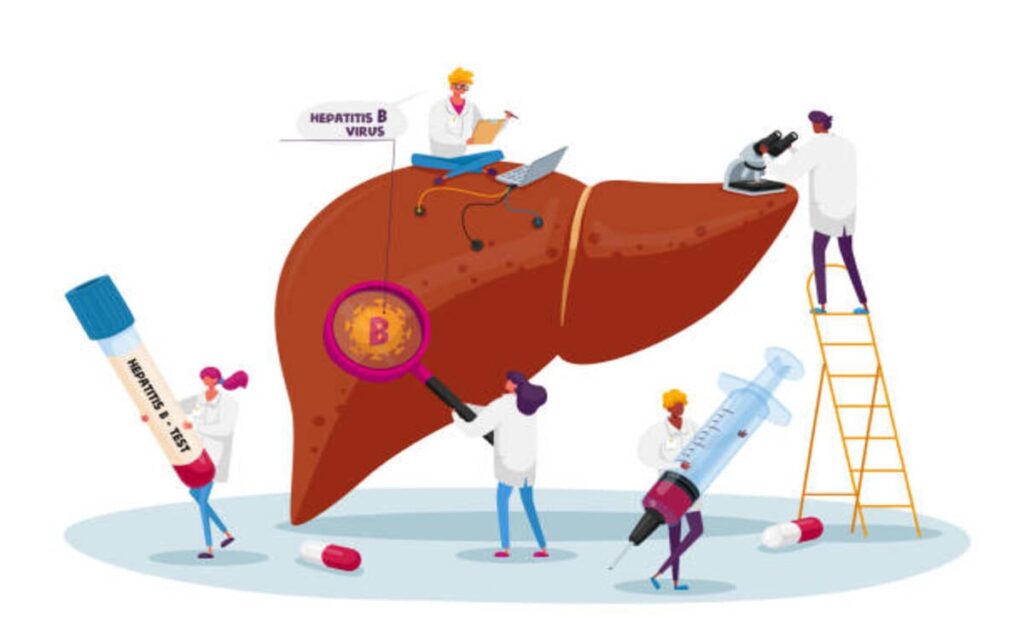
B. Management of Fatty Liver Disease (NAFLD/NASH)
Medications for addressing metabolic dysfunction, oxidative stress and inflammation driving disease progression are frontline therapies for fatty liver diseases.
1. Insulin Sensitizers: Function and Efficacy
Insulin sensitizing drugs like pioglitazone and vitamin E enhance insulin signaling pathways dampened by fatty acid accumulation and metabolic inflammation in liver cells.
Pioglitazone trials demonstrate histological benefits, with vitamin E improving liver enzymes and fat content as well. However, safety concerns with long term vitamin E use remain.
2. Antioxidants: Impact on Liver Health
Oxidative free radicals generated through metabolic dysregulation and inflammation can exacerbate hepatocyte injury and fibrosis progression in NASH.
Antioxidants like vitamin E, betaine, N-acetylcysteine replenish glutathione stores to mitigate oxidative damage. Peroxisome proliferator-activated receptor agonists also boost antioxidant defenses.
3. Lipid-lowering Medications: Effects on Fatty Liver
Statins, fibrates enhance clearance of triglycerides and circulating fatty acids through increasing oxidation and reducing synthesis pathways. Ezetimibe decreases intestinal cholesterol absorption.
These help regress liver fat accumulation, laboratory abnormalities and steatohepatitis changes, indirectly improving insulin sensitivity and metabolic profile.
C. Treatment Approaches for Cirrhosis
In advanced scarring and liver failure from cirrhosis, medications aim to manage complications and slow disease progression.
1. Diuretics: Managing Fluid Retention
Ascites and peripheral edema resulting from poor albumin synthesis and portal hypertension are treated with aldosterone antagonists like spironolactone and loop diuretics like furosemide.
These promote excretion of retained sodium and water through urine. However, electrolyte monitoring is essential given risk of overdiuresis.
2. Beta Blockers: Controlling Blood Pressure in Cirrhosis
Non-selective beta blockers like propranolol and carvedilol lower portal pressure by inducing vasoconstriction in splanchnic circulation, which reduces variceal bleeding risk.
They also decrease cardiac output and improve renal perfusion in advanced disease.
3. Antibiotics and Laxatives: Role in Cirrhosis Management
Gut microflora imbalances can increase ammonia production and absorption leading to hepatic encephalopathy. Antibiotics like rifaximin alleviate this by reducing bacterial content.
Lactulose syrup is first line for constipation and encephalopathy through its laxative effects and acidifying gut contents, lowering ammonia uptake.
Additionally, negligible systemic absorption of these agents minimizes risks of adverse events in patients with severely impaired liver function.
III. Choosing the Most Effective Medication
With the wide range of pharmaceutical options available, determining the optimal medication for a patient requires assessing liver status, potential interactions and closely tracking treatment response.
A. Assessing Liver Function for Optimal Medication Choice
Since the liver metabolizes most drugs, impairment in its synthetic, excretory and detoxifying capacity significantly impacts medication pharmacokinetics and effects.
Hence, liver function tests (LFTs), Child-Pugh-Turcotte scores and Model of End-stage Liver Disease (MELD) scores help gauge residual function to guide appropriate drug selection and dosing.
Dose adjustments or substituting metabolized drugs with those undergoing renal clearance preserves efficacy and minimizes toxicity.
B. Understanding Side Effects and Potential Interactions
Medications can exacerbate liver injury or interact with other drugs a patient is taking for comorbidities like diabetes, hypertension etc.
Hence, vigilantly monitoring onset of liver associated symptoms like jaundice and avoiding interacting drug combinations prevents further deterioration.
Seeking therapies with lower hepatotoxicity risk profiles further optimizes medication safety.
C. Importance of Monitoring Response to Treatment
Frequent medical review through relevant lab tests assessing infection clearance or histological changes guides continued usage, modification or discontinuation of pharmacological therapy.
Sustained responses signal successful treatment, while inadequate responses indicate need for alternative interventions or addresses compliance issues.
This allows optimizing patient outcomes through evidence-based changes in therapeutic strategy.
IV. Enhancing Medication Effectiveness
While appropriate medications can effectively manage various liver conditions, integrating certain lifestyle measures improves response. Patient engagement in treatment process also ensures compliance.
A. Adhering to Prescribed Treatment Plans
Strictly following prescribed drug regimens, including completing full course for therapies like hepatitis C antivirals or immunosuppressants in autoimmune hepatitis, is key for durable responses.
Skipping doses risks infection relapse and fosters drug resistance due to subtherapeutic drug levels. Hence, adherence vitally supplements pharmacological potency.
B. Embracing Lifestyle Modifications for Liver Health
Diet and exercise interventions help address obesity, dyslipidemia and diabetes – major risk factors for NAFLD progression. Losing at least 10% body weight and avoiding foods high in fat, cholesterol and fructose alleviates fatty changes.
Exercise also tackles insulin resistance and benefits metabolic parameters underlying liver injury. Restricting alcohol and unnecessary medications further supports liver recovery.
C. Regular Checkups and Follow-ups for Better Management
Consistent physician follow-ups assessing viral load suppression, antibody titers, liver biochemistries etc. provide objective indicators of patient trajectory.
Periodic screening for liver cancer using ultrasound and alpha-fetoprotein in chronic hepatitis and cirrhosis enables early tumor detection and prompt treatment if required.
Together, these strengthen long term prognosis through closely supervised disease management tailored to patient response.
V. Exploring Future Prospects in Liver Disease Medications
While current treatments for many liver diseases have limitations, emerging drug classes and innovative approaches promise more effective future management options.
A. Antifibrotic Drugs: Promise in Liver Disease Treatment
Medications targeting molecular regulation of extracellular matrix deposition and scar tissue proliferation seek to directly attenuate fibrogenic pathways driving cirrhosis progression.
Examples include lysyl oxidase-like 2 inhibitors, galectins antagonists, certain interleukins and growth factor modulators which are undergoing trials.
B. Role of Stem Cell Therapies in Liver Regeneration
Stem cells owing to their regenerative and immuno-modulatory properties may reverse liver injury or augment recovery post transplant.
Both hematopoietic and mesenchymal stem cells are being investigated for conditions ranging from cirrhosis and acute liver failure to inherited metabolic liver disorders.
C. Advancements in Gene and RNA Therapies for Liver Conditions
Gene vectors inserting functional genes help correct certain monogenic inherited liver defects due to enzyme deficiencies.
RNA interference through small interfering RNAs can selectively silence disease drivers like hepatitis C virus protein production and shows initial success against HCV infection.
These emerging platforms herald tremendous therapeutic potential.
VI. Frequently Asked Questions (FAQs)
1. What is the most common medication for liver disease?
The most commonly used drugs are statins, antivirals, immunosuppressants and various symptomatic medications for cirrhosis complications like diuretics, beta blockers etc. based on the specific liver condition.
2. What vitamins should I take for liver disease?
Vitamin E, vitamin C, B complex vitamins, vitamin K, zinc and milk thistle supplements can help reduce oxidative damage and support liver recovery. But consult your doctor before starting supplements.
3. What foods interact with liver disease medications?
Grapefruit, fatty/oily foods, alcohol, iron/calcium/magnesium rich produce can respectively affect drug metabolism, absorption and excretion – requiring dose adjustments. Strict diets may be needed.
4. Can I take OTC pain medications if I have liver problems?
Acetaminophen is contraindicated with advanced liver disease due to risk of toxicity. Other NSAIDs also need close monitoring and minimal required doses. Speak to your hepatologist regarding pain management.
5. How long do I need to take liver medications?
It depends on the medication and condition – curative antivirals are taken for 8-12 weeks while immunosuppressants for autoimmune disease can last from 2 years to lifelong. Never stop medications without medical advice.
6. What are signs my medication is not working?
Persisting symptoms like jaundice, ascites, bleeding etc., abnormal LFT trends, detectable virus titers (for hepatitis) could suggest suboptimal response – needing regimen change as per physician guidance.
7. Is there a cure for liver disease?
Curative options are disease dependent – hepatitis C has excellent cure rates with DAAs while cirrhosis requires liver transplant. NAFLD and other diseases may be managed through lifestyle measures and medications to prevent progression.
8. What happens if I stop taking my liver medication?
Stopping medications can precipitate acute flares or exacerbate existing liver injury. Transplant recipients risk organ rejection while hepatitis resurgence occurs post antivirals. Always consult your doctor beforehand.
Adhering to liver health management plans is vital for optimal outcomes. Being vigilant, promptly communicating with your care team and sticking to treatment enables conquering liver disease!
Summary on Medication for Liver Disease
This comprehensive guide examines tailored medications for diverse liver illnesses – from hepatitis antivirals, immunosuppressants for autoimmune conditions to diuretics and beta blockers managing cirrhosis complications.
We assessed insulin sensitizers, antioxidants and lipid lowering drugs for addressing metabolic dysfunction and inflammation in fatty liver disease.
The importance of nuanced prescribing aligned with liver status, wary monitoring for side effects and tracked treatment response using relevant lab tests is underscored.
For best outcomes, structured pharmaceutical regimens must be integrated with lifestyle changes targeting comorbidities like obesity and diabetes.
We also surveyed cutting-edge research on upcoming therapies like antifibrotic small molecules, stem cell approaches and gene vector techniques offeringhope to progressive liver disease sufferers.
With both vigilance and optimism, the expanding therapeutic arsenal against liver conditions presages improved prognosis and quality of life for patients.
References
https://www.niddk.nih.gov/health-information/liver-disease
https://www.hepatitis.va.gov/patient/treatments/medication-liver-disease.asp https://www.aasld.org/publications/practice-guidelines-0


